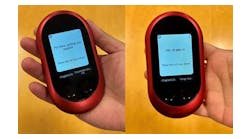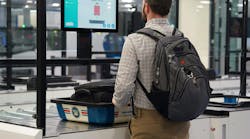Airports have personalities. Whether it’s the expressive hand sculptures of Delhi’s Indira Gandhi International Airport, the interactive rainforest experience between terminals at Hartsfield Jackson Airport in Atlanta, or the “ambient narratives” shown on the 120-foot array of multiple LED screens at Los Angeles International Airport’s International Terminal, centerpiece installations often contribute to these personality traits.
Let’s face facts, however. Nobody wants to spend his or her leisure time at an airport. It’s a means to an end, not to mention it’s typically an experience filled with stress. To enhance the customer experience at an airport usually means making it suck less.
Other public spaces like museums, retail, hospitality and amusement parks have an easier time of enhancing the customer experience. After all, people usually want to be there. Only when the stress of travel is lessened or eliminated, will travelers be open to experience-enhancing things like shopping.
So, how do we begin to address friction points to get travelers to open their wallet for retail?
Since the first release of Brian Eno’s album, Music for Airports in 1978, the industry has been cognizant of the emotional state of its stress-filled, traveling customers. And those in charge of transporting millions of travelers per day are constantly seeking ways to stem the points of friction that naturally go hand-in-hand with air travel.
There are three primary emotions associated with the stress of travel:
1. Anxiety: Which terminal do I go to? Is my flight on time? Do I have to check in at the gate?
2. Frustration: Why is this security line so slow? Why is the gate area so crowded?
3. Fear: Will my car be safe for a week? Who will I be sitting next to on the flight? Will my luggage make the trip with me?
Overcome Anxiety: Bring a Sense of Calm
Los Angeles International Airport’s International Terminal features seven large format media features. Immersive textures, lifestyle content, gesture-based interactive screens, and beautifully shot visual stories help transport stressed travelers into a fantasy world – even for just a few moments. By “bringing back the romance of travel,” the permanent exhibit is a great example of caring for travelers’ emotional well-being, and not just their physical safety.
Overcome Frustration: Show a Sense of Urgency
Kudos go out to Delta Air Lines for investing in innovation. The first airline to reinstate on-board meals for domestic coach flights is also the airline that is trying to solve the clogged TSA lines. They invested $1 million in “innovation lanes” at Atlanta Hartsfield Airport, which resulted in 30 percent more passenger throughput. And they invested another $4 million to augment TSA staffing at 32 other U.S. airports.
Overcome Fear: Lend Peace of Mind
Alaska Airlines made the biggest improvement in mishandled bags in 2016. They developed iBagTracker, an app that alerts the airline’s customer service agents when there was an irregularity with a traveler’s bag. For travelers, there is TrackR, a coin-sized, Bluetooth product that can be clipped to their luggage. Using one’s smart phone and the network of other users’ smart phones, travelers can track the location of their luggage.
For travelers who have satisfied their basic needs, and lowered their level of stress enough to be more open to positive human experiences, shopping can be a welcome diversion while waiting for a flight. Here are a few best practices from retail technology that can be leveraged in an airport.
1. Endless Aisle: Retail spaces at airports typically consume fewer square feet than, say, malls. In order to take advantage of the limited space, an interactive touch screen experience allows shoppers to have access to the store’s entire inventory – without the need to have everything in stock. And, since travelers aren’t keen on carrying additional bags with them on their journey, offering to ship items home for them is often welcomed.
2. Radius Reward Signage: The magic of digital signage is that it can adapt to its environment on the fly. Because traffic volume can vary widely in an airport, outward facing digital signs can do triple duty – depending on how many people are near it. For example, from far away, and with few people in immediate proximity, the sign can act as a billboard, offering a brand impression. With potential shoppers 10-20 feet away, the sign can adjust to become a beacon to draw people into the store. And, in the right circumstances, it can function as a one-on-one search tool for shoppers seeking something specific.
3. Cloud Tags: Often, travelers are in the mood to kill some time in the store, but are not necessarily open to buying (and carrying) anything during their shopping trip. Technologies like CloudTags offers shoppers the ability, without downloading an app, to browse products in the store, and tap their phone to “save” items for later. When saving items, shoppers are required to put in their email address, opening up a line of communication for the retailer.
Using advancements in customer experience enabled by technology, airports have the opportunity to enjoy increased throughput, higher traveler satisfaction, and overall calmer passengers. And calmer passengers spend money.
A principle in the company with a role focused on the development of strategic partnerships and supporting new business initiatives. In his eighteen years with MaxMedia, Don has led campaigns for some of the most trusted brands in the world, including: AT&T, Coca-Cola, Dell, Turner, Shell, and Microsoft. Don is active in the interactive industry and frequently attends events and conferences to stay at the forefront of the latest trends in technology.



